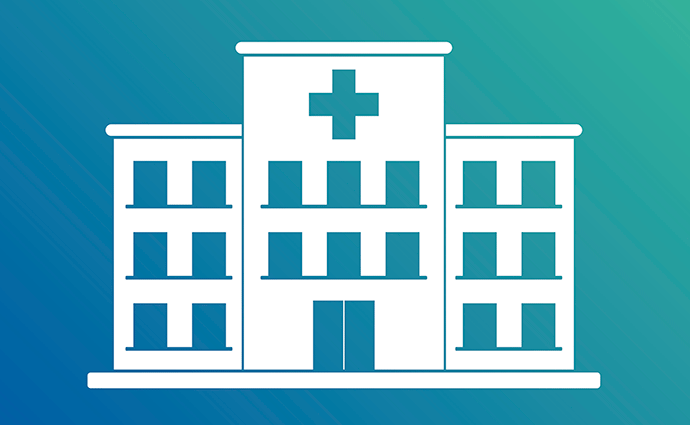Hospitals Acquired 5K Independent Practices from 2015 to 2016
The number of independent practices is rapidly dwindling as hospital acquisitions and hospital employment of physicians accelerates, a study showed.

Source: Thinkstock
- Hospital acquisitions of independent practices continued, with another 5,000 physician practices acquired by hospitals from July 2015 to July 2016, a recent Physicians Advocacy Institute (PAI) and Avalere Health analysis showed.
The national data from July 2015 to July 2016 also uncovered that physicians are moving to hospitals, rather than working in independent practices. The number of physicians employed by hospitals increased by 14,000 physicians, causing the percentage of hospital-employed physicians to grow by 11 percent during the one-year period.
“As payers and hospitals continue to drive consolidation across the healthcare system, it is becoming more and more difficult for a physician to maintain an independent practice,” stated Robert Seligson, PAI President and CEO of the North Carolina Medical Society. “Payment policies mandated by insurers and government heavily favor large health systems, creating a competitive advantage that stacks the deck against independent physicians, who are already struggling to survive under expensive, time-consuming administrative and regulatory burdens.”
The recent findings build on a four-year research project undertaken by PAI and Avalere Health, which revealed a nationwide trend of healthcare consolidation and hospital employment since 2012.
Since July 2012, the organizations observed a 63 percent increase of hospital-employed physicians, with growth in almost every six-month period measured over the four-year study.
READ MORE: Pay-for-Performance Strategies for Independent Physicians, Small Practices
As a result, about 42 percent of physicians were employed by a hospital by July 2016, whereas just one in four physicians were employed by a hospital in July 2012.
Researchers pointed out that the hospital-employment trend has been accelerating since late 2014. The percentage of physicians employed by a hospital grew just five percentage points between July 2012 and July 2014, reaching 31 percent by late 2014.
Between late 2014 and late 2015, the percentage of hospital-employed physicians increased by seven percentage points. Then, the percentage rose by another four percentage points by July 2016.
Additionally, the number of independent practices being acquired by hospitals has significantly increased since 2012, with acceleration occurring since 2014. Overall, the number of physician practices employed by hospitals increased by 36,000 practices since July 2012, representing a 100 percent boost over four years.
The majority of the hospital acquisition trend occurred since late 2014. From July 2012 to July 2014, the number of hospital-owned physician practices grew by 10,000 practices.
READ MORE: Surviving Solo with Independent Practice Association Support
However, hospital-owned practices increased by 13,000 practices between late July 2014 and July 2015 alone. From late 2014 to late 2016, the number of hospital-employed practices increased by a total of 23,000 practices.
As a result of the acceleration, hospitals owned nearly 30 percent of physician practices by late 2016. The constant growth of hospital acquisitions resulted in a 107 percent boost of hospital-owned practices since 2012, representing a doubling of the ownership percentage over the four-year study period.
The hospital acquisition trend is occurring in all regions, researchers added. The percentage of hospital-employed physicians has increased between 5 percent and 22 percent from the previous year in every region across the country, the data showed.
The Midwest particularly experienced a decline in physicians working for independent practices. More than one-half of all physicians in the Midwest belong to a hospital.
On the other hand, the South saw the lowest hospital-employed physician rates, with 37 percent of all physicians. Although, Alaska and Hawaii, which comprised their own region in the study, experienced the lowest rate, with 33 percent of all physicians employed by a hospital.
READ MORE: Collaboration Key to Independent Physicians in Value-Based Care
The hospital acquisition trend also impacted practice ownership across the country. By July 2016, the percentage of hospital-owned practices grew between 8 percent and 47 percent from the prior year in every region, researchers reported.
Again, the trend hit the Midwest the hardest. Over one-third of physician practices in the Midwest were owned by a hospital in 2016.
The hospital acquisition and hospital-employment trends could spell trouble for independent practices and Medicare spending, researchers explained.
As the number of independent practices dwindles, physicians who are employed by hospitals or health systems will perform more services in the hospital outpatient department setting. As a result, Medicare spending could increase because the payment systems for hospital outpatient departments and independent practices differ.
A 2016 Avalere study showed that Medicare pays significantly more for procedures performed in the hospital outpatient department. For example, the risk-adjusted payment for cardiac imaging at a hospital outpatient department was $5,148 versus $2,862 for the same service performed in a physician’s office.
Risk-adjusted payments to hospital outpatient departments were also $462 and $119 more for colonoscopies and evaluation and management services, respectively.
As a result, Medicare spends $3.1 billion more on just four common services because of the growth in hospital outpatient department volume.
CMS has recognized the increased spending trend and implemented a site-neutral payment policy. Starting in January 2017, Medicare reimburses off-campus hospital outpatient departments about one-half of the hospital outpatient rate under a modified version of the Physician Fee Schedule, which independent practices use for reimbursement.
CMS aims to bring the payment rate closer to that of independent practices in 2018 by paying off-campus hospital outpatient departments 40 percent of the hospital outpatient rate.
Whether site-neutral payments help to prevent independent practices from merging with a larger organization remains to be seen. But researchers project the hospital acquisition trend to continue.
